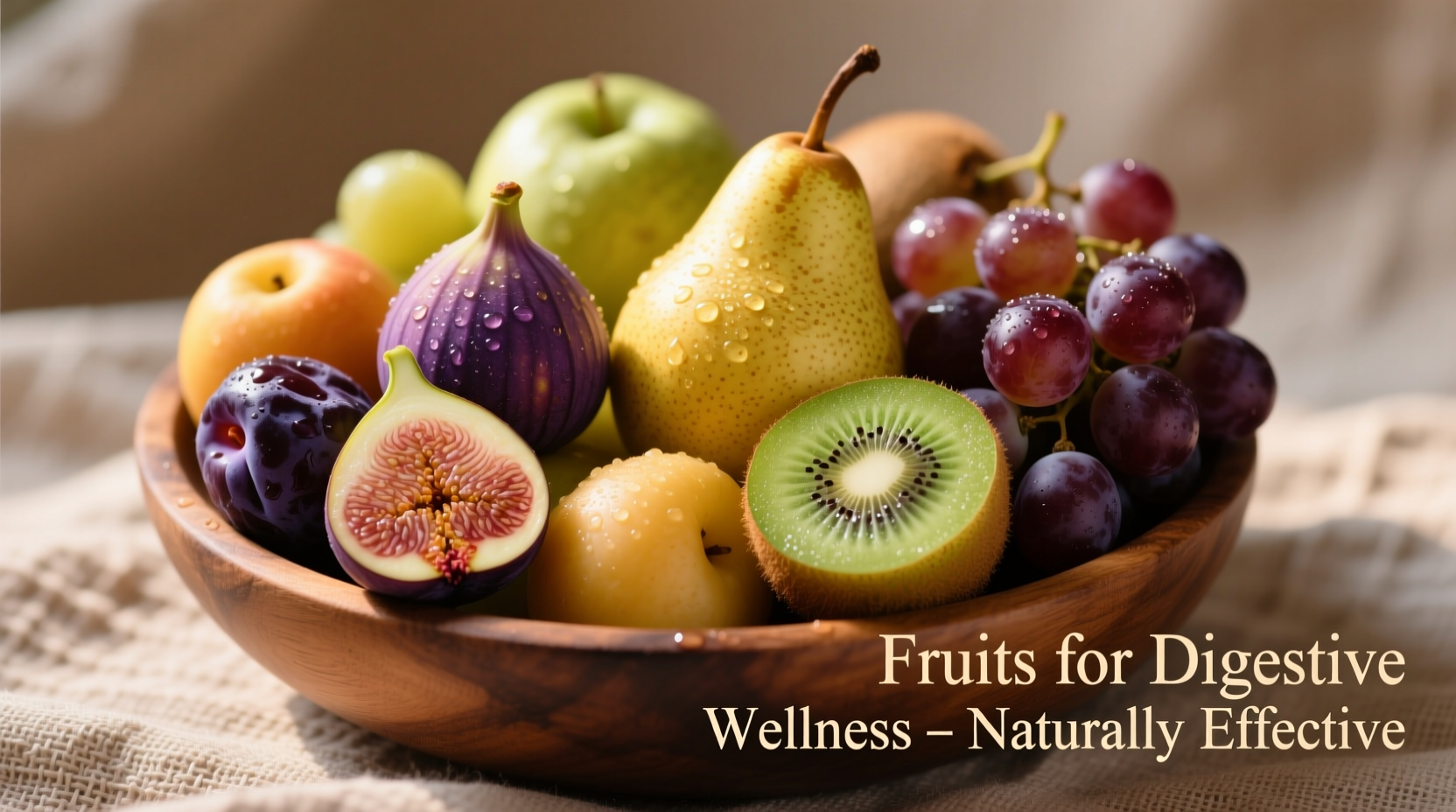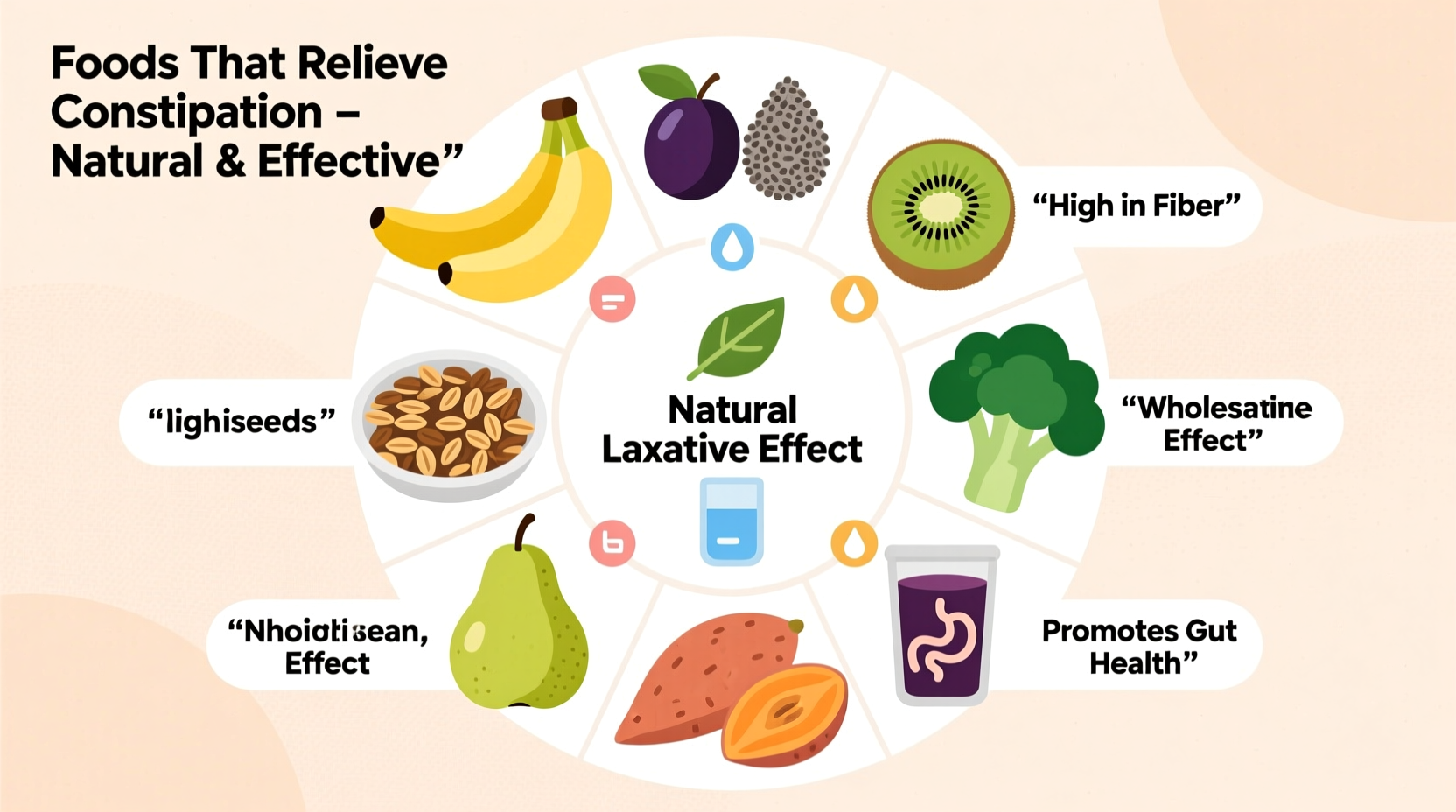If you're struggling with infrequent bowel movements or uncomfortable straining, you're not alone. Constipation affects approximately 16% of adults globally and up to 26% of older adults, according to the National Institutes of Health. The good news is that dietary changes can provide significant relief without medication for most cases.
Understanding Constipation and Fiber's Role
Constipation occurs when waste moves too slowly through your digestive tract, resulting in hard, dry stools that are difficult to pass. While occasional constipation is normal, chronic issues can significantly impact quality of life. The primary dietary solution involves increasing both soluble and insoluble fiber, which work together to:
- Add bulk to stool (insoluble fiber)
- Softens stool by absorbing water (soluble fiber)
- Feeds beneficial gut bacteria that produce compounds aiding motility
The Academy of Nutrition and Dietetics recommends 25 grams of fiber daily for women and 38 grams for men, yet most adults consume only 15 grams. Gradually increasing your intake while drinking adequate water prevents the bloating that sometimes accompanies sudden fiber changes.
| Time After Consumption | Physiological Process | Expected Sensation |
|---|---|---|
| 0-2 hours | Fiber begins absorbing water in stomach | Increased fullness, no bowel changes |
| 6-12 hours | Fiber reaches small intestine, begins bulking | Mild intestinal activity, possible gas |
| 24-48 hours | Fiber reaches colon, stimulates peristalsis | Increased bowel movement frequency |
| 72+ hours | Established regular pattern with consistent intake | Normalized stool consistency and frequency |
This timeline explains why many people give up too soon—they expect immediate results when fiber's effects build gradually over days. Consistency is key for lasting relief.
Top Evidence-Based Foods for Constipation Relief
Prunes: Nature's Most Effective Laxative
Prunes outperform many laxatives in clinical studies. A 2014 study published in Alimentary Pharmacology & Therapeutics found prunes more effective than psyllium for constipation relief. Why they work:
- Sorbitol: Natural sugar alcohol with osmotic effect (6.1g per 100g)
- Dietary fiber: 7g per 100g (both soluble and insoluble)
- Phenolic compounds: Promote healthy gut bacteria
For best results, consume 5-6 prunes (about 50g) twice daily with 8 ounces of water. Fresh plums don't provide the same benefit—the drying process concentrates the active compounds.
Fresh Fruits That Move Things Along
Certain fresh fruits contain unique compounds that stimulate bowel activity:
- Kiwifruit: Contains actinidin enzyme and 3g fiber per fruit. A 2010 study showed two kiwifruits daily significantly improved stool frequency and consistency.
- Pears: High in both fiber (5.5g medium pear) and sorbitol. The skin contains insoluble fiber crucial for movement.
- Apples: Pectin fiber feeds beneficial bacteria. Eat with skin for maximum benefit (4.4g fiber).

Seeds: Tiny Powerhouses for Digestion
Seeds provide concentrated fiber with minimal volume—a crucial advantage for those with reduced appetites:
- Flaxseeds: 2 tablespoons contain 4g fiber. Must be ground to access nutrients. Soak in water 15 minutes before consuming to prevent potential blockage.
- Chia seeds: Form a gel when hydrated, adding bulk while retaining moisture. 1 ounce provides 10g fiber—start with 1 teaspoon daily.
Important: Always consume seeds with adequate water (at least 8 ounces per serving) to prevent worsening constipation.
Legumes and Whole Grains
Beans, lentils, and whole grains provide substantial fiber with protein and nutrients:
- Lentils: 15.6g fiber per cooked cup. Start with ¼ cup daily to allow gut adaptation.
- Steel-cut oats: Higher fiber than instant varieties (5g per serving). The beta-glucan forms a gel that softens stool.
- Popcorn: Surprisingly high in fiber (3.5g per 3 cups)—a satisfying snack option.
When introducing legumes, begin with small portions and gradually increase over 2-3 weeks. Soaking dried beans before cooking reduces gas-producing compounds.
How to Implement These Foods Effectively
Simply adding fiber isn't enough—you need the right approach for optimal results:
Sample 3-Day Constipation Relief Plan
- Day 1: Breakfast - Oatmeal with 1 tbsp ground flaxseed; Lunch - Lentil soup with pear; Dinner - Baked salmon with roasted Brussels sprouts
- Day 2: Breakfast - Greek yogurt with kiwifruit; Lunch - Black bean salad with apples; Dinner - Chicken with brown rice and steamed broccoli
- Day 3: Breakfast - Chia pudding; Lunch - Hummus and vegetable wrap; Dinner - Quinoa bowl with chickpeas and roasted vegetables
This plan provides 25-30g of fiber daily. Increase to 35g only if Day 3 brings relief without excessive gas.
Hydration: The Critical Missing Piece
Fiber without adequate water can worsen constipation. Follow this hydration formula:
- Base requirement: Half your body weight (in pounds) as ounces of water (e.g., 150lb person = 75oz)
- Add 8oz per 5g of additional fiber beyond your current intake
- Add 8oz for each caffeinated beverage consumed
Warm liquids, particularly in the morning, can stimulate the gastrocolic reflex that triggers bowel movements.
When Dietary Changes Aren't Enough
While food-based solutions work for most cases of occasional constipation, certain situations require medical attention. The American Gastroenterological Association advises consulting a doctor if you experience:
- No bowel movement for more than 7 days
- Constipation alternating with diarrhea
- Blood in stool
- Unintentional weight loss
- Symptoms persisting beyond 3 weeks of dietary changes
Some medical conditions like hypothyroidism, diabetes, or irritable bowel syndrome require specialized treatment beyond dietary adjustments. Certain medications (opioids, some antidepressants, calcium-channel blockers) commonly cause constipation that may need medical management.
Foods That May Worsen Constipation
Avoid these common culprits when constipated:
- Unripe bananas (high in starch that slows digestion)
- Excessive cheese and dairy (low fiber, high fat)
- Red meat (low fiber, slows transit time)
- Processed grains (white bread, pastries)
- Dehydration from alcohol or excessive caffeine
Remember that individual responses vary—what works for one person might not work for another due to differences in gut microbiome composition.
Frequently Asked Questions
How quickly do high-fiber foods work for constipation?
Most people notice improvement within 24-72 hours of consistent high-fiber intake with adequate hydration. Prunes often produce results within 6-12 hours for some individuals. Complete normalization of bowel patterns typically takes 3-5 days of consistent dietary changes.
Can too much fiber make constipation worse?
Yes, suddenly increasing fiber without adequate water can worsen constipation. Fiber absorbs water in your digestive tract—if you don't drink enough, it can create a blockage. Always increase fiber gradually (by 5g every 3-4 days) while drinking sufficient water. The general rule is 8 ounces of water per 5 grams of fiber added to your diet.
Are there any risks to using food-based constipation relief?
Food-based approaches are generally safe, but rapid fiber increases can cause gas, bloating, and abdominal discomfort. People with certain digestive conditions like Crohn's disease or strictures should consult a doctor before increasing fiber. Those taking blood thinners should monitor vitamin K-rich foods like leafy greens. Always introduce new high-fiber foods gradually over 2-3 weeks.
Which is better for constipation: prunes or psyllium husk?
Research shows prunes are more effective than psyllium for constipation relief. A clinical trial published in Alimentary Pharmacology & Therapeutics found prunes improved both stool frequency and consistency better than psyllium. Prunes provide natural sorbitol (a mild osmotic agent) plus fiber, while psyllium is primarily soluble fiber. Prunes also contain phenolic compounds that benefit gut bacteria.











 浙公网安备
33010002000092号
浙公网安备
33010002000092号 浙B2-20120091-4
浙B2-20120091-4